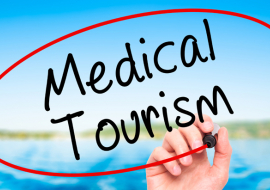Medical Tourism Seeking Affordable Healthcare Overseas
Because the cost of U.S. healthcare remains high, medical tourism could save an American patient thousands of dollars on procedures such as cosmetic or dental surgeries –as long as they are willing to travel to a foreign country where the costs are considerably lower.
Foreign real estate investors can also indirectly benefit from the medical tourism industry, which appears to have a positive impact on the economies of developing destination countries.
The concept of traveling for medical care is nothing new, but the modern concept of medical tourism –traveling to foreign countries specifically for lower cost of care- has only emerged in the past 10 to 15 years, David E. Williams, cofounder and principal of MedPharma partners, and author of HealthBusinessBlog.com, said.
But “in a mainstream way it’s really only started to take off in the past year or two,” because more people are traveling around the world than they were ten years ago, and because the Internet has made long-distance communication more practical, he said.
The numbers of clients for MedRetreat, an American medical tourism services company, have nearly doubled each year since 2005, with approximately 200 clients in 2005, 350 clients in 2006 and 650 clients in 2007, Patrick Marsek, the company’s managing director, said.
Most clients are paying for health care procedures out of their pocket, specifically uninsured or underinsured American patients in need of costly medical surgeries, and clients who seek elective cosmetic or dental procedures, Marsek said.
It is possible for patients to pay for foreign medical expenses with money from their health savings account (HSA). As the number of people with HSAs increases, and people have to take more responsibility for their medical costs, medical tourism could grow even more.
The savings for uninsured clients in need of cardiovascular or orthopedic procedures are perhaps the most dramatic because costs for those procedures are so exorbitant in the U.S.
Hip replacement surgery, for example, could cost anywhere between $40,000 and $65,000 in the U.S., whereas a patient might pay between $8,000 and $18,000, which includes travel costs, to receive the procedure overseas, Marsek said.
Foreign real estate investors might be interested to know that the impact on medical tourism destination economies should be “very positive,” according to Williams. Popular medical tourist destinations include developing countries such as India, the Philippines and South and Central American countries, as well as fairly developed countries, such as Singapore and South Korea.
One important benefit of medical tourism for these countries is that the influx of international patients will create career opportunities that encourage foreign physicians to remain in their home countries as opposed to moving to the U.S. to make a living.














